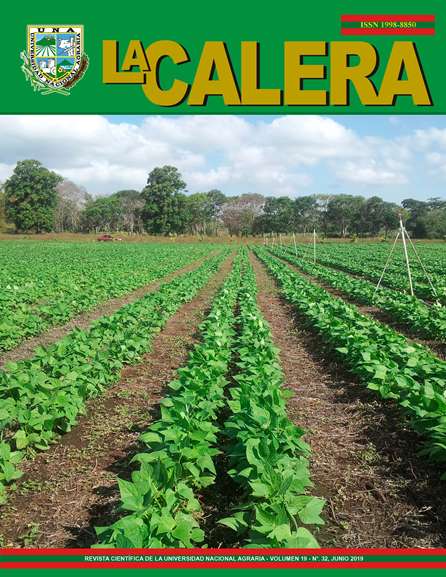Intertidal macroinvertebrates and their association with three types of microhabitat at the Refugio de Vida Silvestre Río Escalante – Chacocente, Carazo, Nicaragua
DOI:
https://doi.org/10.5377/calera.v19i32.8434Keywords:
Biodiversity, ecological, species compositionAbstract
The macroinvertebrate communities are very important because they have an essential ecological role as part of the biotic gear of the intertidal zones. The present study was conducted at the Refugio de Vida Silvestre Río Escalante – Chacocente where biodiversity parameters (richness of species and abundance) and species composition were characterized and compared among three types of microhabitats (rock agglomerations) defined by the form of the rocks that make them up. As a result, 1 808 individuals, 30 species, 26 genera, 24 families and seven classes were observed. The most abundant species according to the number of individuals were: Nerita scabricosta (175 individuals), Littorina aspera (162), Acar rostae (153), Byssomera affinis (117), Eriphia squamata (110) and Anachis lyrata (106). The microhabitat called Peñas, was significantly richer and where greater abundance was determined; however, the composition of the species compared among the microhabitat did not differ significantly, but differences were noted between the individual plots, the plot called Peña 1, presented different types of species and greater species abundances compared to the remaining plots.
Downloads
1016
HTML (Español (España)) 373

